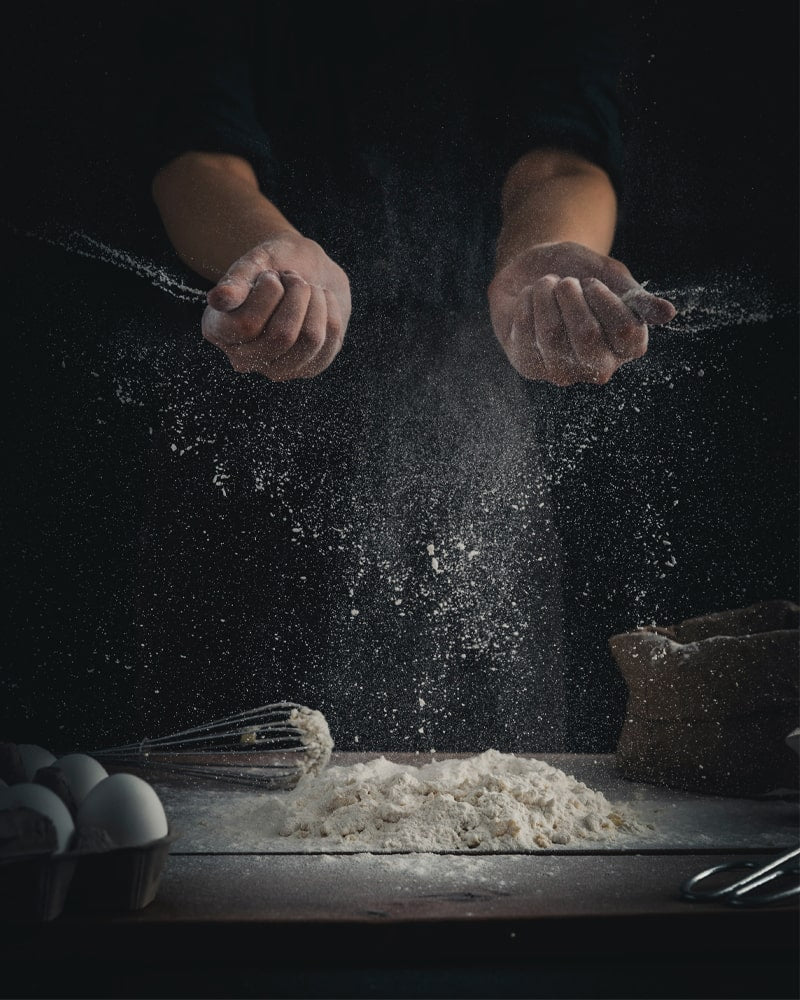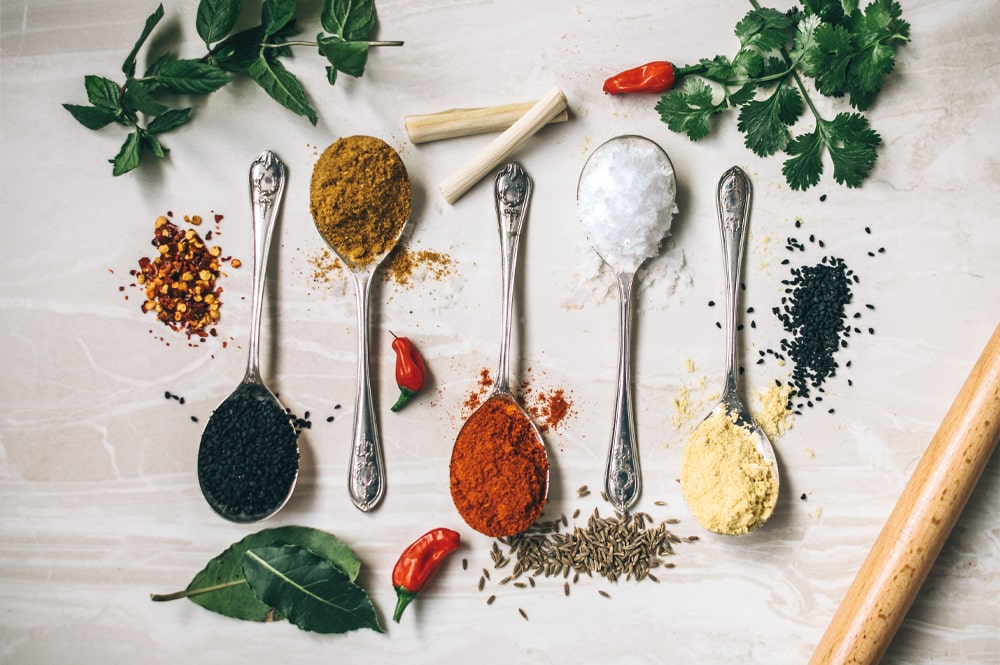Your Cart is Empty
Free US Shipping
Free US Shipping
Have you ever attempted to cook a roast and discovered that the recipe instructed you to bake it in the oven? With cooking terms used interchangeably, you may be wondering what’s the difference. Are cooking and baking the same things? What about roasting?
In general, cooking is a term that refers to a variety of different methods of preparing food. Baking, however, is a specific type of cooking that involves the use of dry heat, most notably in the oven, to prepare food.
While words like cookand bakeare often used in various ways, each word has its own meaning and can alter the results of a recipe if not used appropriately. Below you’ll find a breakdown of what cooking and baking are, and how they differ.
Cooking and baking are terms that are almost universally used and heard on a daily basis. When you hear one of these words, you may be reminded of images of families in the kitchen, preparing ingredients and plating them in preparation for a meal or gathering.
They are so often used that it isn’t always clear how they differ. Both necessitate the use of a variety of edible ingredients, as well as skills and knowledge on how to prepare them. Both entail cutting, chopping, and mixing, and they both have the potential to produce delectable results.
In fact, many people frequently use the terms interchangeably, throwing them together in recipes that oftentimes have nothing to do with baking at all. But does this mean that cooking and baking are the same? Not exactly.
Cooking is a broad term that refers to a variety of methods for preparing food for consumption. Baking, on the other hand, is just one of the many different types of cooking available. Therefore, while baking is, in a sense, cooking, cooking isn’t always baking.
Another difference between cooking and baking is the way they are regarded in the kitchen. Cooking is often referred to as an art by many chefs, while baking is considered a science.
In general, cooks have the same freedom as artists when it comes to creating dishes. They can afford to experiment with different ingredients, measurements, and flavor combinations to produce their desired outcome.
Baking, on the other hand, has more limitations. Have you ever made cookies at home, and they turned out flat and crunchy when you were hoping for plump and chewy? This is because you didn’t get the science right.
Baked goods require more precision when it comes to measuring out ingredients. This is because the ingredients react to each other in specific ways as they are combined and cooked. While it’s possible to experiment with flavors, a baker needs to know the right ratio of key ingredients such as water and flour to yield the best result. If not, you may very well end up with bread that doesn’t rise and pastries that lack texture.

Cooking, at its core, is simply adding heat to food to make it more safe, edible, or enjoyable for consumption. It doesn’t matter whether the food is baked, boiled, fried, or sauteed, the basic principle of cooking is the same—taking raw ingredients and turning them into something we can eat.
That isn’t to say that all cooking methods do the same thing. Deep frying chicken isn’t going to yield the same result as boiling it. As new technology and science emerged, cooking techniques have grown, resulting in a slew of cooking methods that are used in kitchens across the globe.
While cooking is an art that allows for experimentation, not all methods of cooking will yield the best results. For example, if your goal is to create a meal with crunchy elements, boiling your foods probably isn’t the best technique to use. Therefore, it is valuable to understand which cooking methods work best with which foods.
Cooking can be grouped into three categories: dry heat, moist heat, and combination cooking.
Dry heat cooking doesn’t use any water, broth, or other liquids to get the job done. Instead, these methods use hot air, a hot surface, or fat to transfer heat to the food. This can include cooking methods such as grilling, roasting, sauteing, and even deep-frying.
Moist heat, however, requires the use of a liquid or steam to heat and cook the food. These methods include steaming, poaching, and boiling. Moist heat methods are often considered healthier because fat isn’t added as a medium for cooking.
The third category of cooking uses a combination of dry heat and moist heat cooking. The typical methods in this category are braising and stewing. These foods are cooked for a long time at a low temperature, softening the fibers and making them easier to eat.
Among the categories, cooking can be broken down even more into different methods.
There are many ways to cook food, each yielding different results. Potatoes, for example, can be boiled, fried, baked, stewed, grilled, and roasted. While they come from the same vegetable, not many people will say that French fries and mashed potatoes taste the same or even create the same eating experience. That’s because the cooking method used creates different textures and flavors.
Understanding what each cooking method does, will help you choose which one to use to get the textures and flavors you are hoping for. Here are some of the most common cooking methods used today.

Frying is the process of cooking food in oil or fat in a vessel such as a vat or frying pan. Foods are typically cooked at a higher temperature than water, resulting in a distinct crunch and uniform searing. Breaded fish and chicken, vegetables, eggs, and fritters are just a few examples of the many meals that are often fried.

This cooking method involves submerging food in water that has hit its boiling point (212 degrees Fahrenheit) until cooked to a certain degree. The extent that it is cooked varies according to the product being cooked and regional or individual taste preferences. This is usually used for making pasta, vegetables, and some meats.
This is a moist heat cooking method that gently cooks foods just below boiling point. Simmering typically happens for a longer period of time and can be done covered or uncovered. This is often used to coax the most flavor out of sauces and soups.
This is a form of dry heat cooking that uses indirect heat to cook the food from all sides. Baking is typically done at temperatures below 400 degrees Fahrenheit and is often the method used for making breads, buns, pies, and cakes.
This is similar to baking as it uses indirect heat to cook the food. However, a higher degree of heat is used—usually directed only from above—to cook the food on one side.
Grilling uses radiant heat to cook food quickly. Most of the time, grilling equipment features an open grate with a heat source underneath, giving food the iconic grill marks associated with this method.
This is a dry heat cooking method that uses indirect heat to cook food from all sides. While it is similar to baking, this is typically used for cooking meats and vegetables, resulting in equal browning on all sides and rich flavors.
Steaming involves the use of boiling water that vaporizes into steam. Instead of submerging food in boiling water, the food is kept in a separate container above the water that allows the steam to come into direct contact with it. The cooking process happens as the steam transfers heat to the food.
This is a combined cooking method that begins with pan searing and continues with a slow simmer in liquid until the components are tender and smooth. This process turns both the product being cooked and the cooking liquid into a dish with deep levels of flavor.

As mentioned earlier, baking is a form of cooking that uses dry, indirect heat from all sides to cook food evenly. This is typically done at a temperature of 375 degrees Fahrenheit or lower, allowing for the food to cook thoroughly and develop color on the outside.
While it is typically used to make baked goods such as breads and cakes, baking is also great for cooking up savory foods like pizza, casserole, lasagna, and fish.
Because of its lack of added fats, baking is often considered one of the healthiest methods of cooking. But this isn’t necessarily the case.
Baking is often used for making foods like bread, cookies, biscuits, and other dishes that start out as a dough or batter. When heat is applied, the batter begins to change its structure, becoming more solid. While this can make grains a bit easier to digest, the cooking process also affects the vitamin content and availability.
As the product bakes, heat liable nutrients are destroyed, lowering the food’s nutritional value. Since the baking process tends to pull moisture from the food, water-soluble and fat-soluble vitamins are at risk as well.
On top of that, the longer the food is cooked, the more the nutrients will degrade. So, while baking can help you avoid added fats from other cooking methods like frying, this doesn’t really make it healthier.
Because baking and roasting both make use of indirect dry heat, and cooking typically takes place in an oven, many people will use the terms interchangeably. However, there are slight differences between these two cooking methods.
The main difference between them is the temperature at which food is cooked. In general, roasting takes place at a higher temperature than baking, allowing for more browning at a faster rate. Roasting is also often done uncovered, whereas baked goods can be covered depending on the dish.
Another distinguishing factor between the two is that roasted foods are typically solid when they enter the oven. Baking will often involve dough or batter that experiences a chemical and structural change during the cooking process.
For these reasons, the term roasting is often reserved for food like meats, vegetables, and poultry, while baking is used for pastries, breads, and fish.

If you’ve ever used an air fryer, you may have noticed that the cooking method seems awfully similar to baking. And you’re not wrong.
Air fryers use a dry heat cooking method to circulate heat around all sides of the food. The differences between an air fryer and an oven are the small size and the way the heat circulates.
Because of the small dimensions, air fryers are able to heat up faster and more efficiently than a conventional oven. Air fryers also use a fan to circulate heat, helping the heat spread out for more even cooking.
So, can you bake in an air fryer? Absolutely!
Even though the appliance you are using is different, the way heat transfers to the food is the same.
Hopefully, you now have a better understanding of cooking and baking and when to use each method.
Despite the fact that the goal of both may be the same—that is, to produce delicious food—the two differ in the type of food that they produce, the appliances and tools that they require in the process, and the ways that they are regarded in the kitchen.
When in doubt, remember that baking is cooking, but cooking isn’t always baking. Baking is a science and leaves room for little experimentation. It also tends to happen at a lower degree of temperature. So, if your oven is set to 450 degrees, then you’re most likely roasting, not baking.
